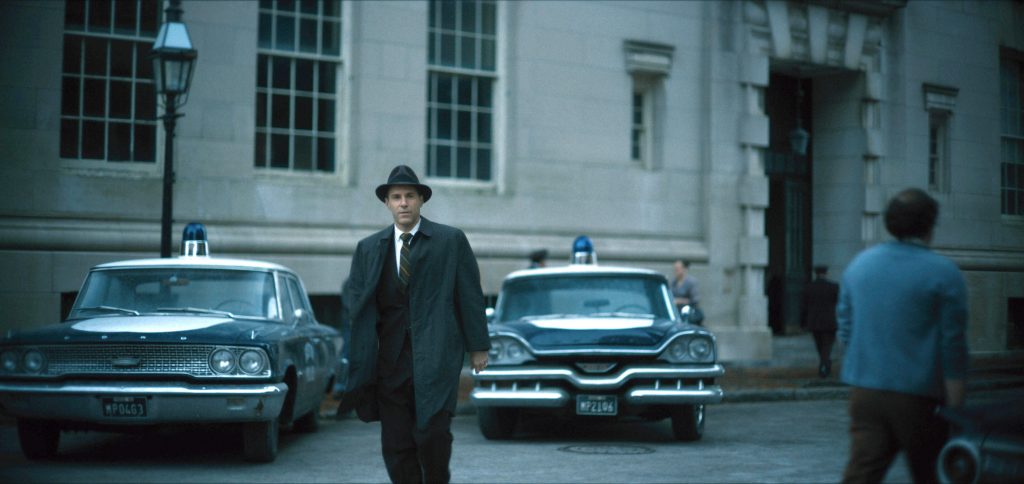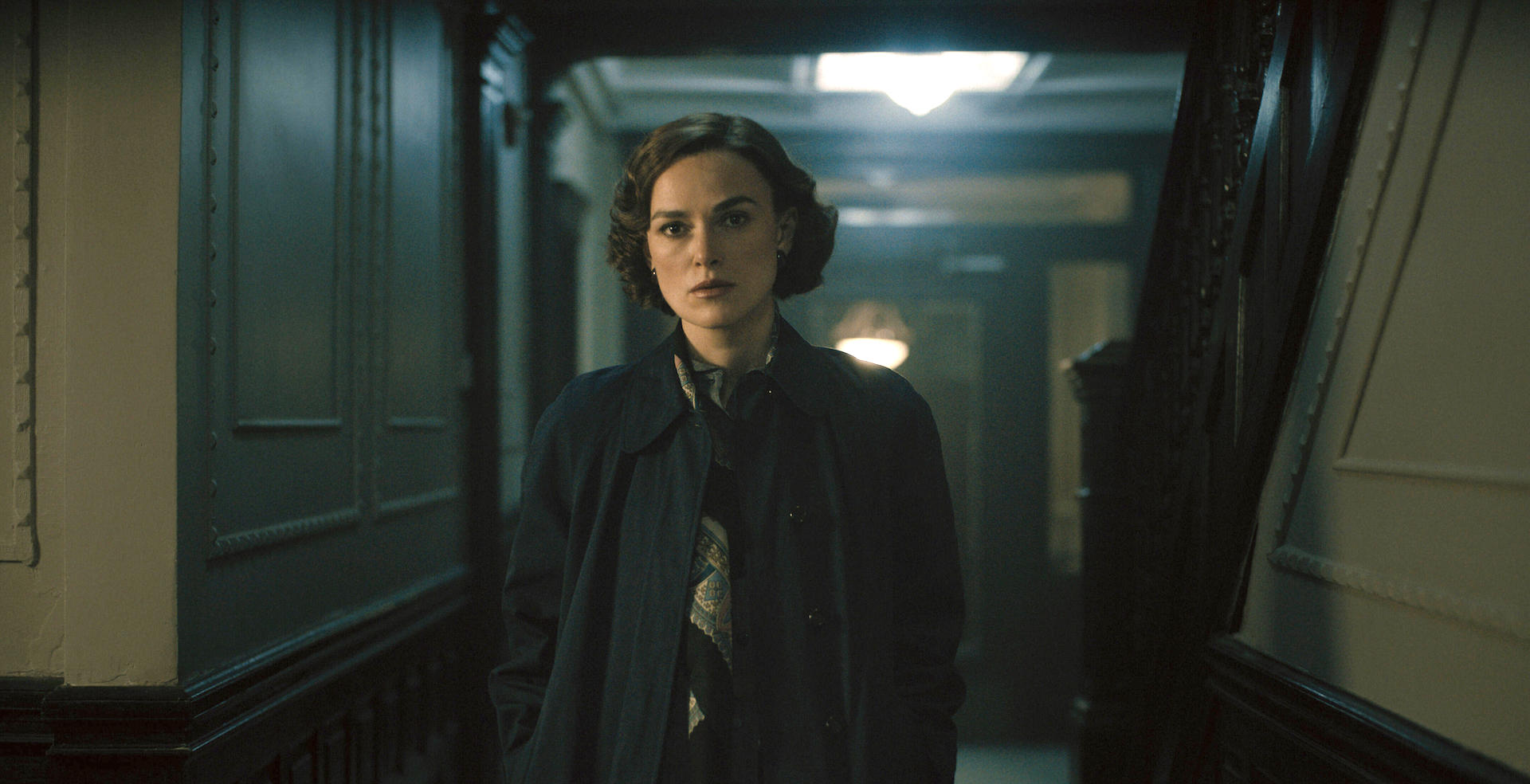While working at a restaurant in Boston, as somewhat of a chef’s apprentice, Matt Ruskin decided he really wanted to pursue filmmaking. Coincidentally, the manager of the restaurant knew Darren Aronofsky from their time together at Harvard. One phone call later, Ruskin was interning on Requiem for a Dream.
“It was the first movie I ever worked on,” says Ruskin. “Just to be around such an incredible group of filmmakers and learn from them. After that, I was really bitten by the bug and I knew I had to find a way to do this.” Thanks to his willingness to be an apprentice — as a chef and filmmaker — doors opened up for the filmmaker.
“I never sat out to be a screenwriter. I did that by necessity, which is a big part of how things work in the independent film world. You do whatever you have to do to get something made. But, I think running right at the thing you want to do is smart. I wish I did more of that earlier.”
“By spending a year in a kitchen and not in a theoretical environment, I learned pretty quickly what the reality of that business is. I realized I put more pleasure in cooking for four people at home, rather than four hundred at night. But I also try to make people my mentors.”
When it comes to finding mentors, Ruskin says, “If you tell people what you want to do, but you know you need to start at the lowest level, they’re willing to give you that opportunity to be around and try and earn that experience.”
Writing as a Necessity
After Requiem for a Dream, Ruskin worked on documentary films for the better part of a decade. As much as he enjoyed working on projects like Glen of the Downs or The Hip Hop Project, he knew his real passion was in narrative filmmaking, not unlike that of Aronofsky.
“I realized no one was going to help me [make the transition] and I needed to figure out how to self-generate material and push it up the hill. It’s sort of cliché. I got my hands on every screenwriting book I could, took a writer’s bootcamp, and just did everything I could to educate myself.”
Looking back, the thing that helped Ruskin most was reading other screenplays and “writing bad screenplays” of his own. Through this trial-by-fire take on the craft, he was eventually able to write works others were interested in making including Booster and In Crown Heights.
Somewhat following along the two-hander crime tales comes the latest project, Boston Strangler, a new take on the murders in 1960s Boston, told mainly from the perspective of two female reports (Keira Knightley and Carrie Coon).
Uncovering the Boston Strangler
Warning, there are partial plot spoilers ahead…
“Having grown up in Boston, the Boston Strangler was something I had heard about my whole life, but I realized I didn’t know anything about the case until I started reading about it,” says Ruskin. “So I dove in and found everything I could to read and found this murder mystery at the heart of it.”
There’s a famous film from 1968 called The Boston Strangler, based on Gerold Franks best seller. The film stars Tony Curtis, Henry Fonda, and George Kennedy. “What I discovered was that there is a whole other layer to this story that they didn’t even approach. They told the story from the perspective of the police and the attorney general.”
The other side of the story is that “no one was ever tried or convicted for the Boston Strangler murders and there’s a ton of doubt about the identity or identities of the strangler and thought there was a really compelling movie in there. For the same reasons, it didn’t make sense to tell the hard-boiled detective story.”
Instead, we see the story through the eyes of two female reporters. While they do interact with the police (Alessandro Nivola as Detective Conley), that’s not the main focus of the story. Ruskin jokes he is also “not a serial killer aficionado.”

Detective Conley (Alessandro Nivola) Photo courtesy of 20th Century Studios
“Then I discovered these two reporters — Loretta McLaughlin and Jean Cole.” Essentially, Loretta was one of the first people to connect the murders as possibly being linked to the same killer. At the time, about ten years prior to what we saw in David Fincher’s Mindhunter series, the term “serial killer” didn’t even exist yet.
Loretta “gave the Boston Strangler his name during the course of her reporting.” The paper took advantage of the fact they had two women investigating the story, which made for extra tension during the film.
Researching Journalism Movies
With this new angle in mind, Ruskin started to research journalism movies (All the President’s Men, Zodiac) and read everything he could find about the two female reporters. “There was almost no information about them available,” he says. “But I read Jean Cole’s obituary, my amateur soothing, but one of her daughters was on Facebook and in her picture, she had an arm around a friend of mine.”
Despite the awkward first encounter (“why are you on my mom’s Facebook page?”) Ruskin explained his interest in the story and eventually learned about Jean Cole from her granddaughter. He was then able to talk to both families and “revisit the case through the perspective of these two journalists.”
“I had seen All the President’s Men so many times, but we absolutely went back and looked at that film. Particularly, because they photographed a newsroom better than anybody. So, we were constantly going back and seeing how they photographed the newsroom to give it the scope and the feel that they did. And looked at other journalism movies, true crime movies. We obviously took a lot of inspiration from David Fincher. He’s a master of tone and how he moves and places the camera.”
Ruskin describes the ambition of the film as to create “a slow burn of a pressure cooker and to always feel the weight of these murders hanging over the film.” Despite depicting horrific crimes, the screenwriter didn’t want to make a horror movie about a serial killer. It’s more about the women and the important work that they did.

Matt Ruskin
To bring these two women to the big screen, it’s all about being as truthful as possible. “I always feel an obligation to the truth when you’re dealing with real people who left real families behind. You want to get it right. Of course, you have to take some liberties, usually in the form of oversimplifications, to paint a picture in an economical way.”
If he ever felt stuck in any given scene, he would call a friend who worked in a newsroom to discuss the mechanics of the room. Or, with a character issue, he would call the children of the two real reporters for more character details.
Matt Ruskin’s Boston
With all of this in mind, when it came time to describe the setting, Ruskin purposefully left out some of the Boston accent. “I really wanted to shy away from Boston accents. Having grown up there, I know a range of people — from zero accent to thick accents — even if it’s done very well, it can be a distraction. I didn’t want people talking about the accents. I wanted them to talk about the story.”
“One of the fun things we got to do was try and bring this period back to life,” he says. “[Everyone] was so detail-oriented, not just to Boston, but to the economic class of these people, the neighborhoods, the type of clothes women on a journalist’s salary might be wearing… the wallpaper in an old lady’s apartment in downtown Boston. It was just about creating a rendition of that that transported people.”
As stated earlier, Ruskin still continues to reach out to mentors. “It’s invaluable for me to talk to people who have learned the lessons ten times over. To be able to call them and talk to them about a decision that needs to be made or a challenge that we’re facing.”
As for advice to anyone trying to break in, Ruskin acknowledges it’s a tough industry to break into. “I don’t have fantastic advice, but one of the things that helped me more than anything was getting my hands on good screenplays and reading them. See how great writers approach the craft. Anything from the way in which they describe scenes to the structure. I really recommend people do that. It’s easy. Everything is online and it’s available to everyone who wants it.”
As a producer on his own movies and films like The Infiltrator, he’s concerned with two things, “Is it a great movie and is it a great read? Sometimes you can just tell by looking at how the words look on the page. Do they know what they’re doing? That’s a gross generalization, but experienced screenwriters, you’ll see less dense descriptions. It’s concise. It’s a good read. It has an energy to it. They all tend to kind of look similar to each other. Good screenplays have a momentum to them. If you have a story you need to tell, or a great idea, that’s going to break through.”
This interview has been condensed. Listen to the full audio version here.

